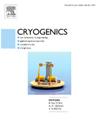Study on the high-frequency conversion characteristics of quench and recovery states under thermal modulation of a superconducting flux transformation amplifier
Abstract
To tackle the challenge posed by 1/f noise which significantly hinders the practical application of superconductor/tunnel magnetoresistance (TMR) composite magnetic sensors in low-frequency detection, this paper proposes a magnetic field thermal modulation method specifically tailored for the superconductor/TMR composite sensor. The method employs alternating joule heating via a resistance wire to induce partial quenching and recovery states conversion in the superconducting flux transformation amplifier (SFTA). Firstly, a thermo-electric–magnetic comprehensive finite element simulation model was developed to obtain the temperature and magnetic field distributions during the quenching and recovery state conversion process, and then to realize the size optimization of the thermal modulated structure. Final experimental tests conducted in the liquid nitrogen environment demonstrated a high modulation frequency of 5 kHz was achieved. Meanwhile, the interlayer capacitor-coupling effect was introduced to explain the phenomenon of resistance deviation from zero for the thermal modulated superconducting constriction under the higher modulation frequency. The breakthrough in this article holds promise for the low-frequency application of superconductor/TMR composite sensors.

 求助内容:
求助内容: 应助结果提醒方式:
应助结果提醒方式:


